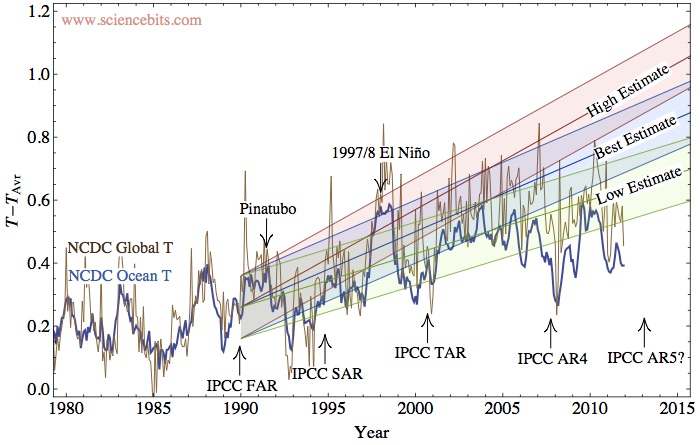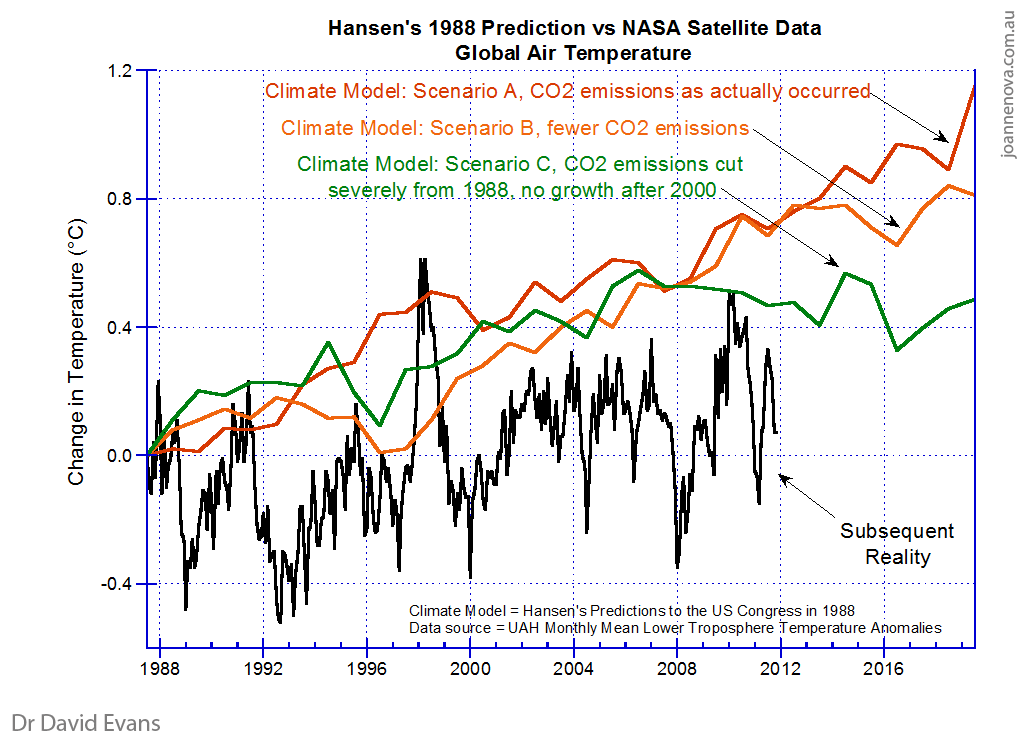trysail
Catch Me Who Can
- Joined
- Nov 8, 2005
- Posts
- 25,593
http://www.telegraph.co.uk/earth/en...ing-as-Nobel-laureate-resigns-in-protest.html
A Nobel laureate has quit one of the world's leading organisations for scientists in protest at its assertion that the evidence of damaging global warming is "incontrovertible".
By Philip Sherwell
25 Sep 2011
A Nobel laureate has quit one of the world's leading organisations for scientists in protest at its assertion that the evidence of damaging global warming is "incontrovertible".
By Philip Sherwell
25 Sep 2011
In a fresh challenge to claims that there is scientific "consensus" on climate change, Prof Ivar Giaever has resigned from the American Physical Society, where his peers had elected him a fellow to honour his work.
The society, which has 48,000 members, has adopted a policy statement which states: "The evidence is incontrovertible: global warming is occurring."
But Prof Giaever, who shared the 1973 Nobel award for physics, told The Sunday Telegraph. "Incontrovertible is not a scientific word. Nothing is incontrovertible in science."
The US-based Norwegian physicist, who is the chief technology officer at Applied Biophysics Inc and a retired academic at Rensselaer Polytechnic Institute, the oldest technological university in the English-speaking world, added: "Global warming has become the new religion."
Prof Giaever was one of Barack Obama's leading scientific supporters during the 2008 president election campaign, joining 70 Nobel science laureates endorsing his candidacy.
But he has since criticised Mr Obama over his stance on global warming and was one of more 100 scientists who wrote an open letter to him, declaring: "We maintain that the case for alarm regarding climate change is grossly overstated."
He has now parted company with the APS after what he called lengthy consideration. In an email to its executive office Kate Kirby, he said he "cannot live" with its official statement on global warming.
He questioned whether the average temperature of "the whole earth for a whole year" can be accurately measured, but contended that even if the results are accurate, they indicate the climate has actually been "amazingly stable" for 150 years.
And he concluded that in any case, both "human health and happiness have definitely improved" over the so-called "warming period" of the last century and a half.
In its policy statement, the APS declares: "Emissions of greenhouse gases from human activities are changing the atmosphere in ways that affect the Earth's climate. They are emitted from fossil fuel combustion and a range of industrial and agricultural processes. The evidence is incontrovertible: global warming is occurring. If no mitigating actions are taken, significant disruptions in the Earth's physical and ecological systems, social systems, security and human health are likely to occur. We must reduce emissions of greenhouse gases beginning now."
Prof Giaever is one of the most prominent scientific dissenters challenging the controversial man-made global warming claims of the United Nations Intergovernmental Panel on Climate Change (IPCC) and former US vice-president Al Gore.
He has testified to the US Senate about his doubts, calling himself a "sceptic" on global warming and citing both his birthplace and other scientific scares he has seen come and go during his career.
"I am Norwegian, should I really worry about a little bit of warming?" he said. "I am unfortunately becoming an old man. We have heard many similar warnings about the acid rain 30 years ago and the ozone hole 10 years ago or deforestation but the humanity is still around.
"Global warming has become a new religion. We frequently hear about the number of scientists who support it. But the number is not important: only whether they are correct is important. We don't really know what the actual effect on the global temperature is. There are better ways to spend the money."
Prof Giaever, 82, is not alone in rejecting the APS's insistence that there is consensus on the existence and severity of man-made global warming.
Several prominent members have expressed frustration that it has refused to reconsider its position – drawn up in 2007 – in the light of the "Climategate" controversy about the findings of the Climatic Research Unit at the University of East Anglia.
"Measured or reconstructed temperature records indicate that 20th - 21st century changes are neither exceptional nor persistent, and the historical and geological records show many periods warmer than today," dissenters wrote in an open letter to it its governing board.
Last year, another sceptic, Hal Lewis, a University of California professor quit the group, describing global warming as a "scam" and a "pseudoscientific fraud".
In a statement issued after Prof Lewis' departure, the APS said that "on the matter of global climate change, APS notes that virtually all reputable scientists agree... carbon dioxide is increasing in the atmosphere due to human activity".
Tawanda Johnson, an APS spokeswoman, told The Sunday Telegraph that the society was "disappointed" by Prof Giaever's decision. It believed the criticisms were based on "misunderstandings" but would not "engage in a back-and-forth on Ivar's observations".
The APS says it that its climate change statement does not assert that "anthropogenic" (man-made) climate change is incontrovertible – but that the evidence of global warming is.
The society continues: "The graph of global temperature vs. time for the last 30 years shows just that. The statement also contains the following language: 'Emissions of greenhouse gases from human activities are changing the atmosphere in ways that affect the Earth's climate.' That statement is based on basic principles of molecular physics and thermodynamics.
"Finally, the statement acknowledges uncertainties in the science: 'Because the complexity of the climate makes accurate prediction difficult, the APS urges an enhanced effort to understand the effects of human activity on the Earth's climate.'"
more...
http://www.telegraph.co.uk/earth/en...ing-as-Nobel-laureate-resigns-in-protest.html






